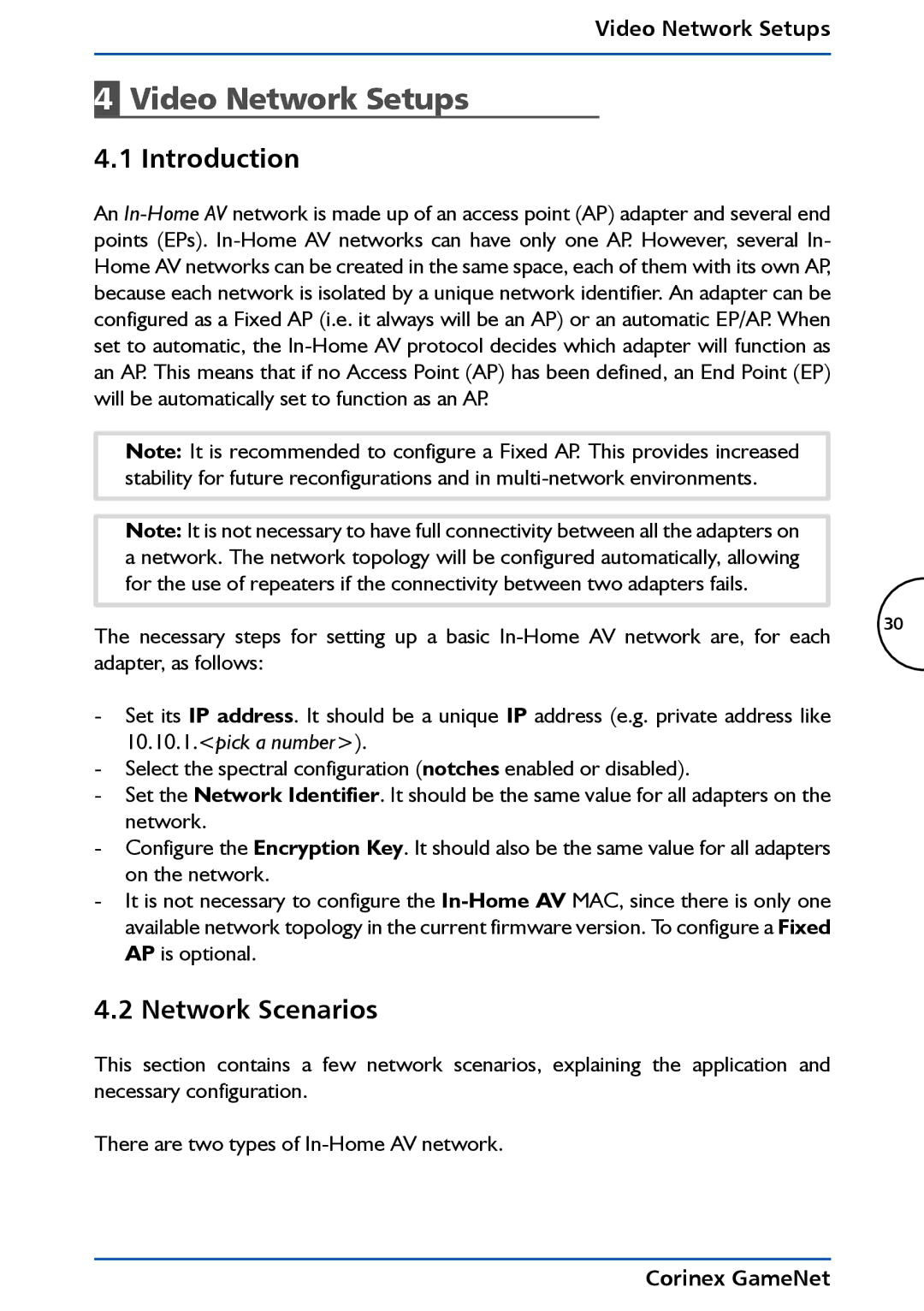
Video Network Setups
4 Video Network Setups
4.1 Introduction
An
Note: It is recommended to configure a Fixed AP. This provides increased stability for future reconfigurations and in
Note: It is not necessary to have full connectivity between all the adapters on a network. The network topology will be configured automatically, allowing for the use of repeaters if the connectivity between two adapters fails.
The necessary steps for setting up a basic | 30 |
| |
adapter, as follows: |
|
-Set its IP address. It should be a unique IP address (e.g. private address like 10.10.1.<pick a number>).
-Select the spectral configuration (notches enabled or disabled).
-Set the Network Identifier. It should be the same value for all adapters on the network.
-Configure the Encryption Key. It should also be the same value for all adapters on the network.
-It is not necessary to configure the
4.2 Network Scenarios
This section contains a few network scenarios, explaining the application and necessary configuration.
There are two types of
